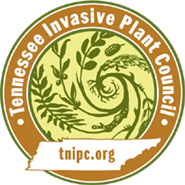Elaeagnus pungens Thunb.
Thorny Olive| Category |
|---|
| Shrub |
|
Similar Species May be confused with the following native and/or non-native species. Landscape Alternatives lists native horticultural substitutes |
Menziesia pilosa Landscape Alternatives |
|---|

Description
Height
Thorny olive is a densely bushy shrub 3 to 25 feet (1 to 8 m) in height, with long limber projecting shoots, scattered thorny branches.Bark
Bark dark drab and rough with projecting thorns.Twigs
The shrub has multiple stems and is densely branched. Twigs are brown and dense with brown scales and hairy when young. Short shoots with small leaves become sharp branched or unbranched thorns 0.4 to 1.6 inches (1 to 4 cm) long, and in the second year produce leafy lateral branches, followed by flowers in fall. Lateral branches that are distinctly long, limber, and in late summer to spring extend beyond the bushy crown and ascend into trees.Leaves
Thick evergreen leaves are alternate, oval to elliptic and thick, 0.4 to 4 inches (1 to 10 cm) long and 0.2 to 2 inches (0.6 to 5 cm) wide with irregular and wavy margins. Blade surfaces are silver scaly in spring becoming dark green or brownish green above and densely silverscaly with scattered brown scales beneath. Petioles are 0.1 to 0.2 inch (4 to 5 mm) long, grooved above.
Flowers
Thorny olive produces axillary clusters of one to three, fragrant flowers,0.4 inch (1 cm) long, silvery white to brown and tubular with four lobes. It flowers in fall October to December.
Fruit and Seeds
Oblong, juicy drupe, 0.3 to 0.6 inch (1 to 1.5 cm) long, contains one nutlet. It is whitish ripening to red and finely dotted with brown scales in spring (March to June). A persistent shriveled calyx tube is found at the tip.Images
Photo: Ted Bodner, Southern Weed Science Society, Bugwood.orgMore images of Elaeagnus pungens
Life History
Thorny olive is an introduced, fast-growing woody shrub in the Elaeagnaceae (Oleaster) family. It sends out long, limber, nearly leafless shoots giving it a wild-haired unkempt appearance. Normally, thorns develop at a 45 degree angle to the tip, but on these leafless branches the spine orientation is reversed allowing the shoot to hook onto other plants and literally climb into trees. Often found as escaped single plants from animal-dispersed seeds. It is frequently planted for hedgerows and on highway right-of-ways and is still used for landscaping as an ornamental.Habitat
Thorny olive is tolerant to shade, drought, and salt. It spreads by animal-dispersed seeds and occurs as scattered individuals, both in the open and under forest shade and is able to increase in size by prolific stem sprouts.Origin and Distribution
Thorny olive is native to Japan and was introduced in 1830. Other states where invasive: VA.Sources: Information on this plant page derived primarily from the Tennessee Management Manual and James H. Miller's Nonnative Invasive Plants of Southern Forests, USDA Forest Service.
Management Recommendations
Mechanical Controls
Cutting: Cut trees at ground level with power or manual saws. Cutting is most effective when trees have begun to flower to prevent seed production. Because autumn olive spreads by suckering, resprouts are common after treatment. Cutting is an initial control measure, and success will require either an herbicidal control or repeated cutting of resprouts.Girdling: Use this method on large trees where the use of herbicides is not practical. Using a hand-axe, make a cut through the bark encircling the base of the tree, approximately 15 cm (6 in) above the ground. Be sure that the cut goes well into or below the cambium layer. This method will kill the top of the tree but resprouts are common, and may require follow-up treatments for several years until roots are exhausted.
Hand Pulling: Autumn olive is effectively controlled by manual removal of young seedlings. Plants should be pulled as soon as they are large enough to grasp, but before they produce seeds. Seedlings are best pulled after a rain when the soil is loose. The entire root must be removed since broken fragments may resprout.
Herbicidal Controls
Foliar Spray Method
This method should be considered for large thickets of autumn olive seedlings where risk to non-target species is minimal. Air temperature should be above 65°F to ensure absorption of herbicides.Glyphosate: Apply a 2% solution of glyphosate and water plus a 0.5% non-ionic surfactant to thoroughly wet all leaves. Use a low pressure and coarse spray pat-tern to reduce spray drift damage to non-target species. Glyphosate is a non-selective systemic herbicide that may kill non-target, partially-sprayed plants.
Triclopyr: Apply a 2% solution of triclopyr and water plus a 0.5% non-ionic sur-factant to thoroughly wet all leaves. Use a low pressure and coarse spray pattern to reduce spray drift damage to non-target species. Triclopyr is a selective herbicide for broadleaf species. In areas where desirable grasses are growing under or around autumn olive, triclopyr can be used without non-target damage.
Cut Stump Method
This control method should be considered when treating individual trees or where the presence of desirable species preclude foliar application. Stump treatments can be used as long as the ground is not frozen.Glyphosate: Horizontally cut stems at or near ground level. Immediately apply a 50% solution of glyphosate and water to the cut stump, covering the outer 20% of the stump.
Triclopyr: Horizontally cut stems at or near ground level. Immediately apply a 50% solution of triclopyr and water to the cut stump, covering the outer 20% of the stump.
